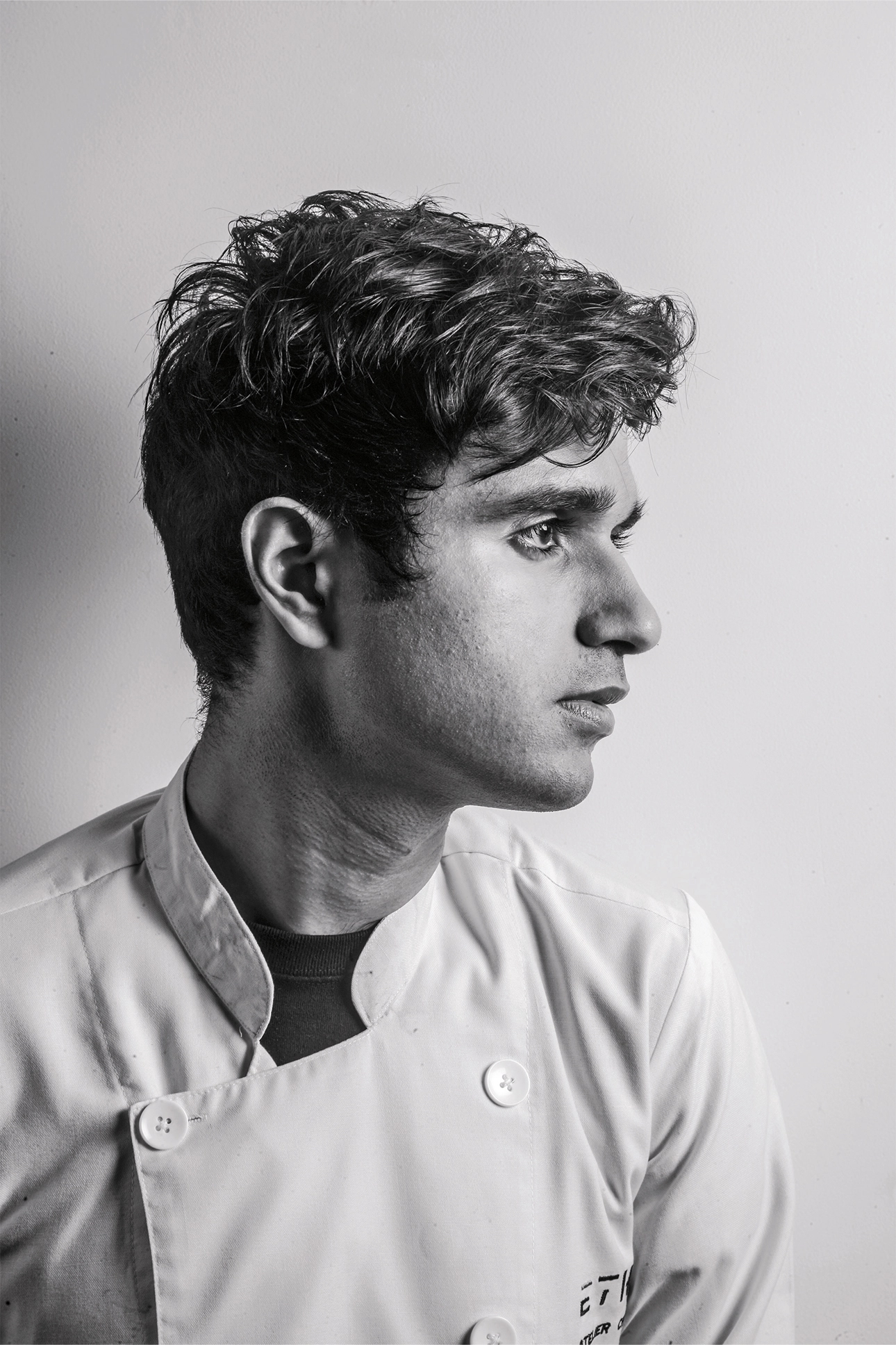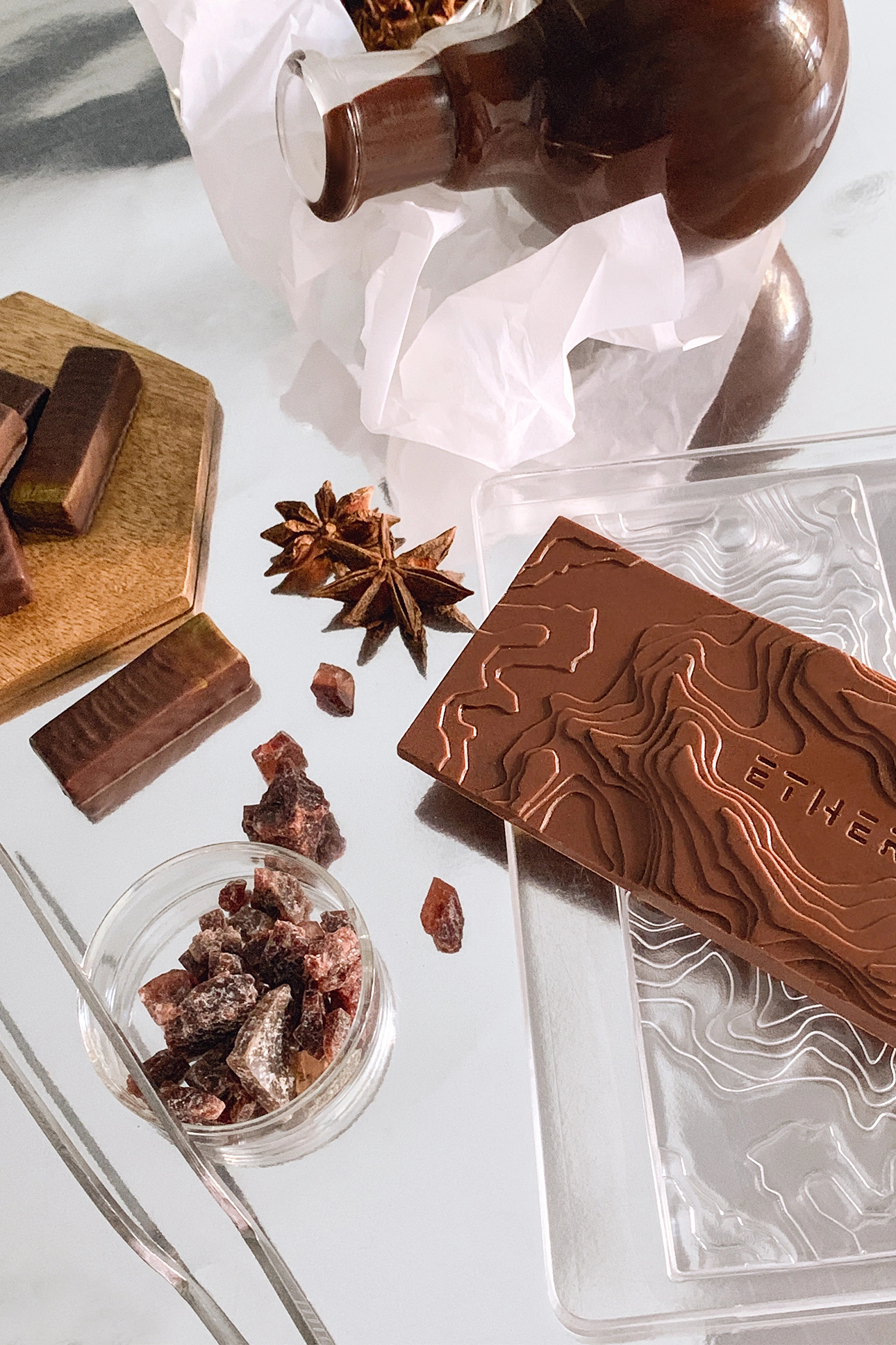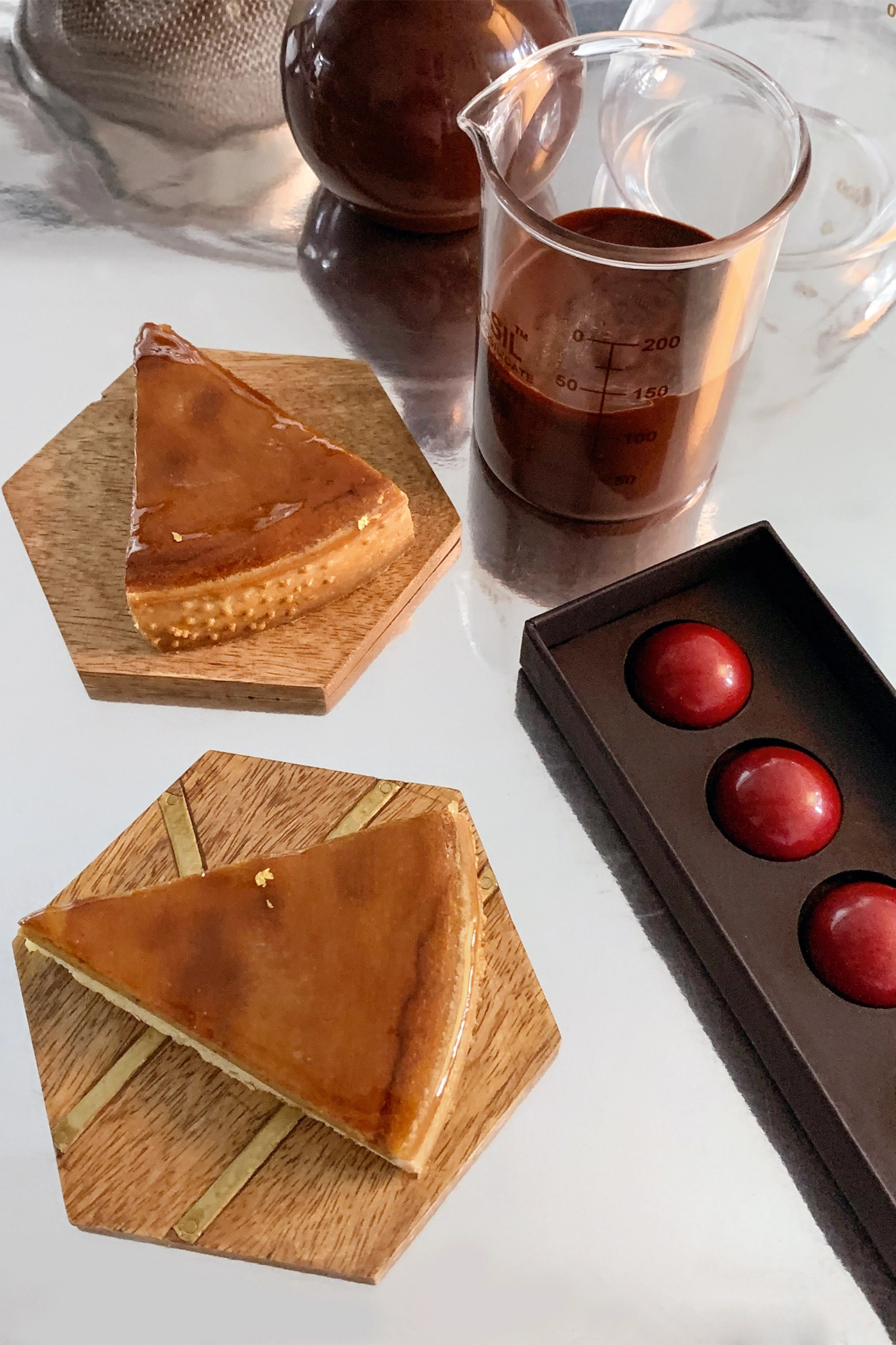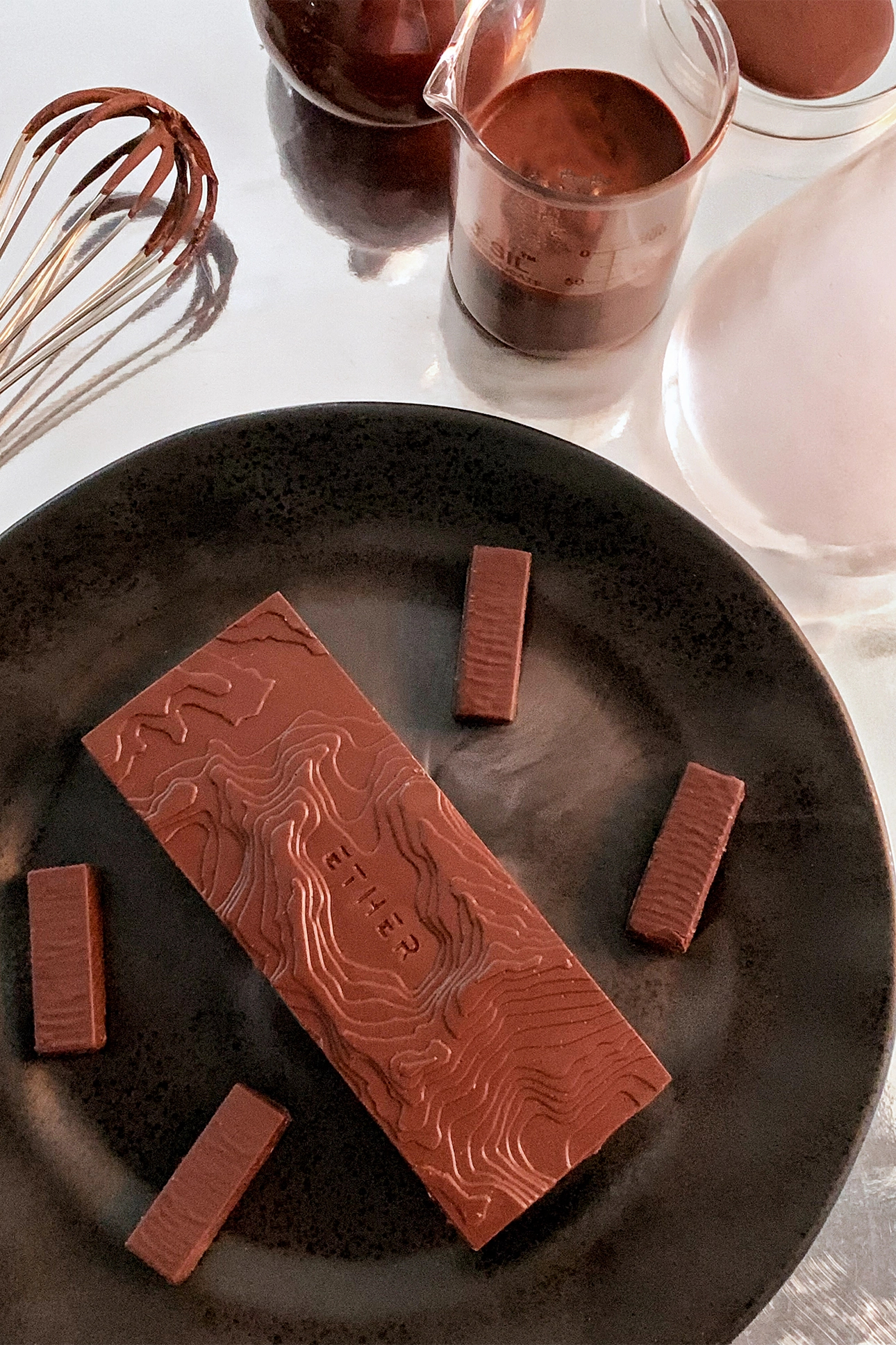
He kick-starts the conversation by apologising for the state of his hair, although I can’t tell that it’s dishevelled. “Sorry, it’s a bit of a mess. It’s been a mad morning,” he says unassumingly, over a video call. “We are making our first wedding cake,” he confesses. “I have a friend who’s refusing to get married until I make the wedding cake so I’m going against myself in saying I’ll never make a wedding cake to now frantically making a wedding cake,” he finishes in a single breath. At 26, Prateek Bakhtiani has been termed something of a prodigy in the Indian chocolate- and pastry-making circuit. How does he react to this, I ask him. Although momentarily taken aback, he regains his composure swiftly. “Badly,” he smiles, shyly. “I’m a millennial, and we are really not adept at taking compliments, although I’m happy with the response.” And then I catch a glimpse of that other prized millennial trait — individualism — along with a whiff of the piquancy that will season the rest of our chat: “Even if people really hate what I do, I’d still come back and do it tomorrow; I do what I do for me.”
It took a detour for Bakhtiani to find his true calling. After some coaxing, he reveals reluctantly, “I graduated in chemistry from Washington University at 20. I was sort of intrinsically good at it so I could rush through a lot of the semesters. And I was lucky enough to skip a few courses because I tested out of them. Since I managed to get some more coursework done while I was working for a research lab over summer, I graduated early— the university had offered me a teaching job that I had applied for while I was an undergraduate student myself. I had to break down how my peers learn, which is different from how I learn. That experience really helps me now that I have chefs working under me.”
Bakhtiani was in the process of writing his master’s thesis when the head of the lab inspired him to take a year off “to pursue anything I liked”. The opportunity to expand his horizons was accompanied by a loss of equilibrium, although the unfamiliar territory he was stepping into would eventually hold him in good stead. “When I took my gap year, I realised I didn’t have any hobbies; I was just a “good Indian boy” studying chemistry. I hear a lot about chefs who hated their previous jobs and gave it all up to be a chef, but that’s not my story at all. I loved chemistry. I thought, ‘I enjoy drinking alcohol, maybe I’ll go study wine’,” he jokes. And so, Bakhtiani found his way to the pioneering Ballymaloe Cookery School in Ireland to study viticulture. “The school is located on an organic farm, and the students there are really involved with the farming process. It helped me reinvent the way I live my life and contextualise what I feel about food. And I fell deeper in love with wine.” His teacher, celebrity chef Rachel Allen, spotted his potential as a pastry chef and recommended he move to Paris. “I studied wine and pastry at Le Cordon Bleu and as I had this predisposition towards chemistry, chocolate caught my eye because it is fundamentally technical. It’s very precise and it fits into the way in which I was already used to processing information. Subsequently, I studied in Italy and Mexico, and worked in Vancouver, Belgium and Vegas, before returning to Mumbai in 2017 to launch my brand, which I did in early 2019.”
Excerpts from a conversation…

Why would a consumer choose Ether over other brands and who is your ideal taker? Your brand of chocolate is a bit like fine wine….
Though it seems counter-intuitive, I’m honestly not concerned with how my brand sets itself apart from the others. I don’t care whether my customers know what porcini is, in fact, my ideal customer might very well know nothing about food at all; what I appreciate above all else is curiosity and the desire to learn more. Ether could eventually end up being a niche product that appeals to the elitist sections, but I hope it doesn’t. I would hate to be pretentious about my chocolate or alienate anybody. I’m lucky to have tasted as much as I have. I draw from those sensory experiences, and I hope I can provide that to as many people as possible.
Why the name “Ether”?
In the medieval era, ether was thought of as the fifth element, the quintessence that made up heavenly bodies and would help unlock the mysteries of alchemy. This idea of reaching for something ethereal while remaining tethered to a particular place reflects how I want to approach cooking, so the name seemed like a natural fit.
How have you tried to intertwine chemistry and chocolate with this venture?
The honest answer is that I don’t need to try too hard. Understanding fluid dynamics, for example, is central to the aspects of texture, mouthfeel, stability and shelf life — chemistry is naturally embedded in what we do. Chocolate is a fatty product, and for the fat to not split, we need to create a certain emulsion and understand fluid dynamics. I’m intensely aware of what I’m adding to and taking away from my chocolate and how that affects the way the different fats interact with each other. But, mostly, this knowledge comes in handy when I’m doing something wrong. Very recently, we were trying to do a coconut cream and it kept splitting. No one could figure out why the recipe was not working. I went back to my understanding of the different kinds of fats and realised that we needed to rebalance the proportions to increase the solid percentage in the recipe.
Earlier, you said you would continue to work with chocolate even if the world claims it is toxic tomorrow….
I don’t care what the world thinks about chocolate, me, or my craft. Health and wellness don’t play a part at all in my scheme of things. Chocolate is a treat — it should be sweet and enticing, and I would never sacrifice that. That my chocolates are vegetarian is not a marketing decision. Our Noir de Noirs collection is vegan, but that is a by-product of the correct way to prepare such rich, dark, single-plantation chocolate. If I added dairy, the terroir would be altered in a manner that would detract from the natural taste of the cacao. Making chocolate is the only love I’ve ever known; those who remember the powerful grip of their first love will understand.

You have said you come from a place of inspiration (travel, daily life, the human condition) and emotion in your chocolate-creating process.
What happens when we experience something extraordinary? We might take a picture, or write about what’s moved us; the act of recording how we feel is an act of looking intently, an act of love. In this regard, the process of composition is also a process of archiving. For me, chocolate is similar — I interpret emotions and places in terms of scent, flavour and texture. The act of creation is a homage to the human condition. The core of it comes from my experiences. Our V-Day collection was my interpretation of Valentine’s Day through the medium of chocolate. It came from my understanding of relationships and companionships and, traditionally, I haven’t had the best experiences in this department. And that’s the emotion I poured into my V-Day bonbons. We did four flavours (black pepper and caramel, black sesame and yuzu, black stout and vanilla, and black truffle and raspberry), and each bonbon had two elements or layers in it — one dark and one light. We had one golden heart to represent “the one that got away” and 15 pitch-black hearts to celebrate loneliness. It helped me recontextualise my romantic shortcomings.
What are some of the challenges you have faced?
I feel the biggest challenge that I’ve faced, and still do, is my opposition to compromise. It’s difficult to make the better “business choice” when it clashes with my love for the craft. To what extent can you make your product accessible while staying true to your artistic hygiene and the truthfulness of your art? My customer concierge and business development teams usually start out with a pretty large group of people we want to market to, and we pick out the clients we want to work with from within that group. We call every single person who contacts us through the website, and even if you’ve ordered one chocolate, we will ask you how you’ve found us, why you found us, what you think of the chocolate, why you picked us over Lindt or La Folie…. I have only X amount of money that I can spend on marketing, so I will spend it on people who care about what they eat. This is how I hope to build a following and a financially sustainable if not a profitable model while staying true to the fact that this is an artisanal operation.
Can you tell me a little bit about the different kinds of chocolate you offer? Why do you term them as “collections”?
Currently we have five Autumn/Winter collections — Smoke, Noir de Noirs, Clover Club, Kizuna and Nero Lanka. It’s so hard to market them as “collections”, but I use the term because each category has a theme that runs through it, and I try to build upon it in various ways. Our Smoke collection is an experiment in single-origin chocolate and smoke pairing. The theme is this smoky woodiness. Similarly, my Noir de Noirs collection is inspired by single-plantation dark chocolate, Clover Club by the New York jazz scene, Kizuna by Japanese minimalism and the East Asian imagination, and Nero Lanka by Indian petrichor.
I always try to create flavours that are intrinsically so complex that the chocolate sort of becomes an experience. Instead of creating one chocolate, I break it down into three expressions, and when you eat all three, you completely understand the rounded inspiration. With Smoke, the idea was to pay homage to wood. We got three different woods and smoked them; then paired each wood smoke with the appropriate single-origin chocolate based on its underlying nuances and notes. As the Madagascar dark chocolate has ruby-red undertones, lush red fruits, tertiary dirt and silt notes, we used a cherry wood which also has fruity notes. Whereas with the Tanzanian cacao, which has a strong, acidic, dark-chocolatey, bitter origin, we used applewood because it’s an orchard wood and gives an autumnal roundedness apart from balancing out the cacao. And to bring it back to the idea of terroir, I added some smoked cayenne to it to acknowledge that this is a chocolate from Africa, where cayenne is a very important part of life. The candied oranges in the Madagascar cacao plus the panela and maple in the Ecuadorian, are the little notes that accent their respective terroirs.
The pastries we do are a response to what we find in the market. We are doing three traditional American pies for the festive season. Because Indian pumpkins are fantastic, we are making a pumpkin pie (with my secret pumpkin spice recipe), a blueberry-tapioca pie and a pecan pie.

Chocolate is said to boost mood, make people happy and conjure up feelings of love, pleasure and reward. Do you believe so or is it “nutrifluff” — plain PR mixed with a dollop of pop psychology?
I think it’s definitely cringey irrespective of whether I believe in it. If it makes you happy, great, but I don’t make chocolate to make people happy. Chocolate is made up of sugar, and sugar, like cocaine, has been proven to release serotonin and perk you up. Hundred-per-cent chocolate is a lie; by legal definition, chocolate is cocoa and sugar or a sugar substitute. Hundred-percent chocolate is known as cocoa liquor.
Where does your chocolate come from?
I’m strictly a chocolatier so I don’t have to worry about sourcing the bean or the agriculture bit — I make sure that the chocolate makers I work with are living up to ethical standards and giving me a true representation. I always ask where the beans come from and, in most cases, I go visit the farms, meet the families who run them, see how much of that earth I can taste in the chocolate and how much of that I can use in what I create. I source chocolate from America, France, Ecuador, Switzerland and Madagascar, and I’ve just started exploring Australia as well.
Why is India not a viable option for you?
We do source Indian-origin chocolate from Naviluna Artisan Chocolate. Because cacao plantations are relatively new here, I think we are still in that phase where we are trying to figure out how to grow more cacao without it rotting or going to waste due to our hot and humid climate instead of figuring out how to refine the flavour of the origin. A lot of Indian cacao tends to taste too homogenous, and since the idea behind my creativity is to take the subtler notes and harvest their nuances, it doesn’t work for me. This idea of using Indian chocolate just because it’s Indian doesn’t appeal to me. Creativity should be meritocratic, and I don’t particularly care about the ethnocentric marketability of it. See, I don’t force fruit into my recipes because I like fruit or because it appeals to my clients; I do it because fresh local fruit is better and it fits well within the framework of the pastry that I’m trying to create. I don’t buy locally only because I’m interested in saving the Earth, it’s because I also want to use fresh produce. I don’t buy seasonally because it’s cheaper. So, I’m not going to do that — buy Indian chocolate just because it’s Indian.